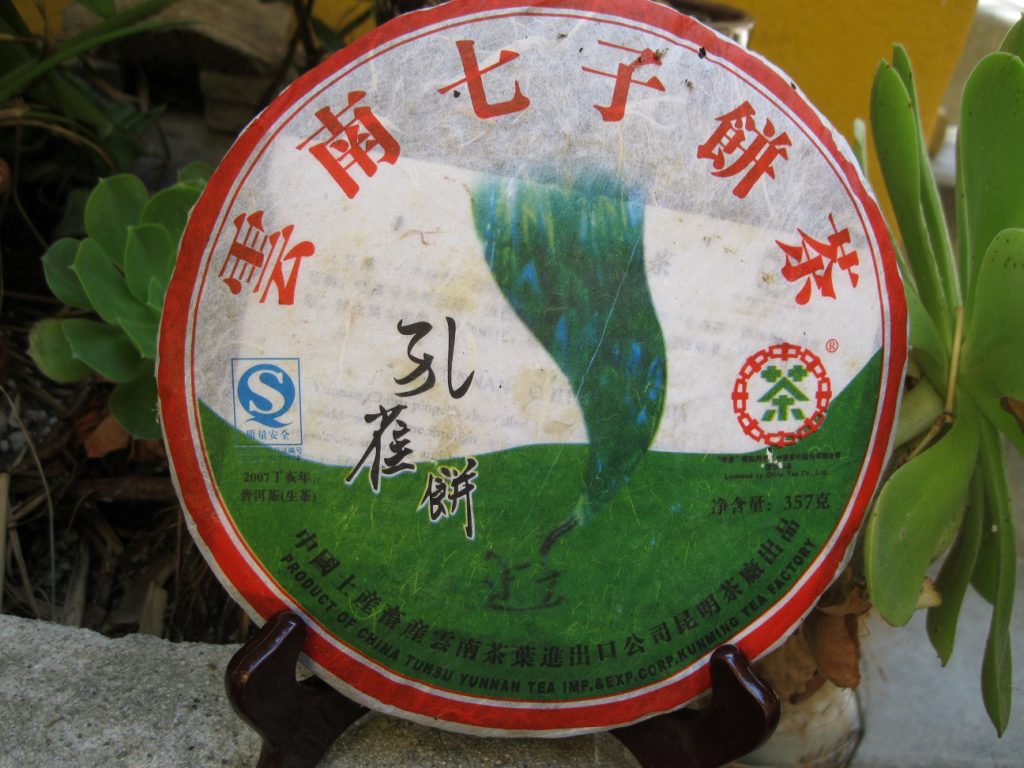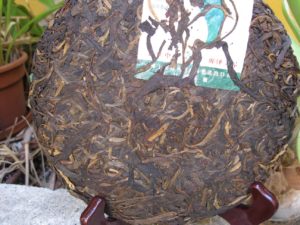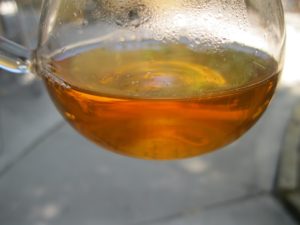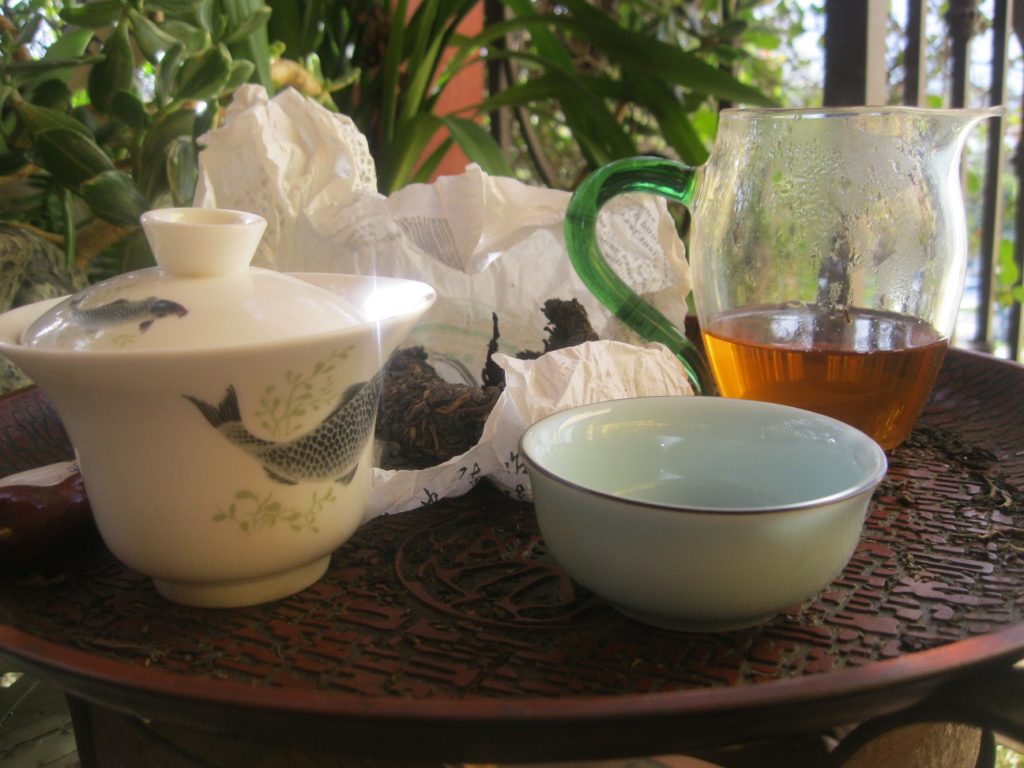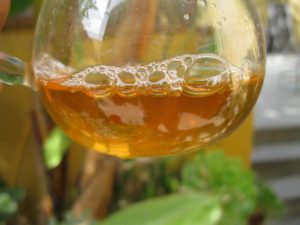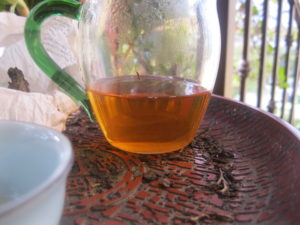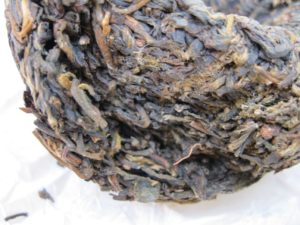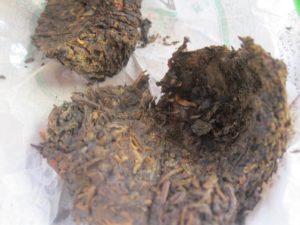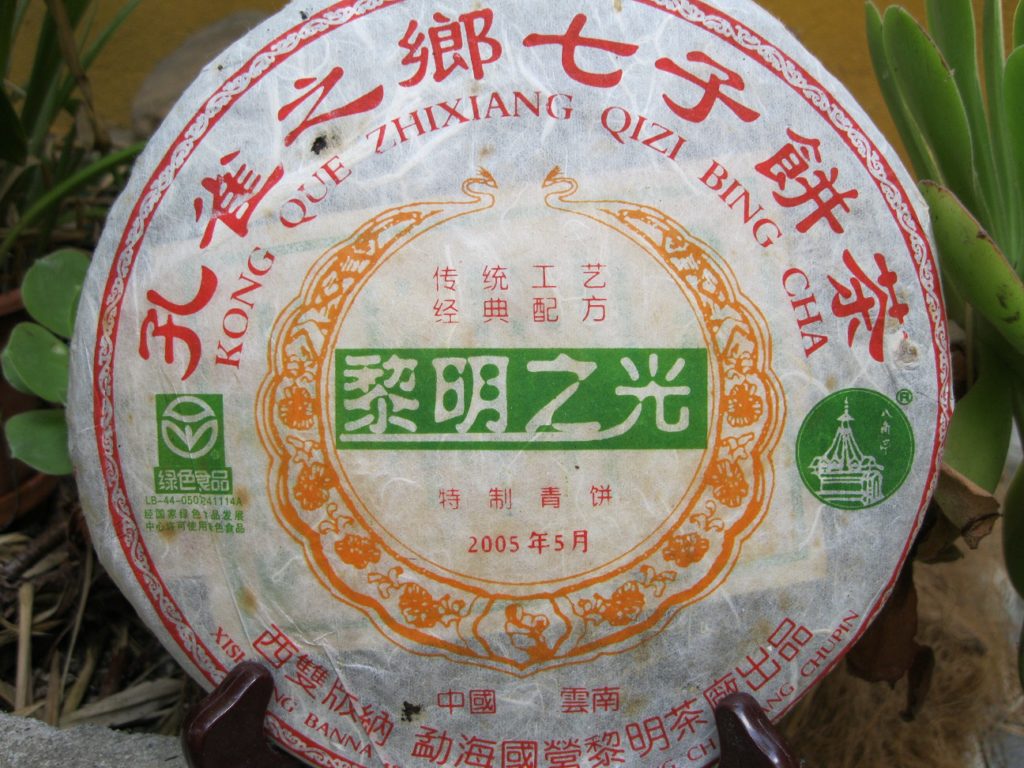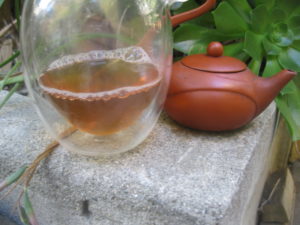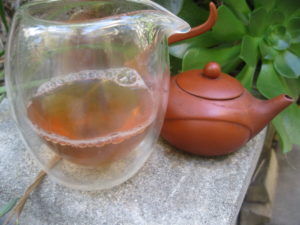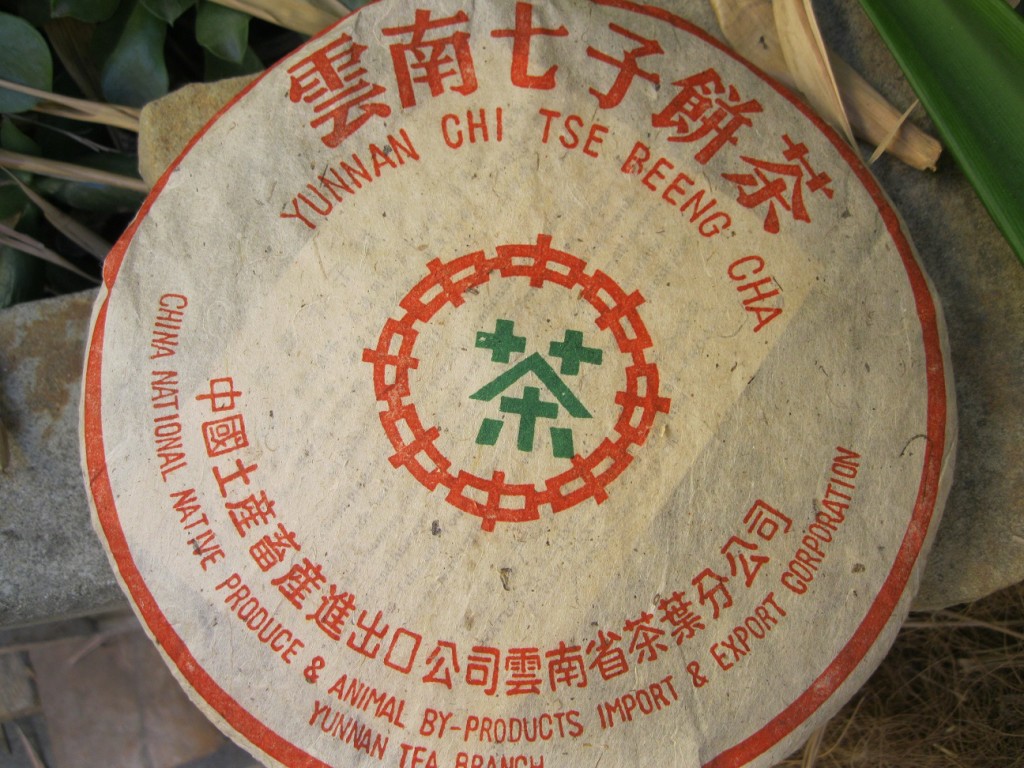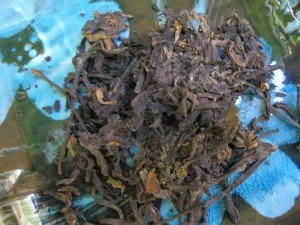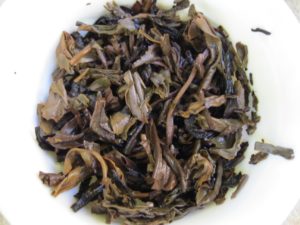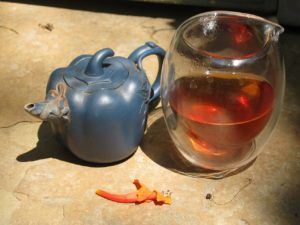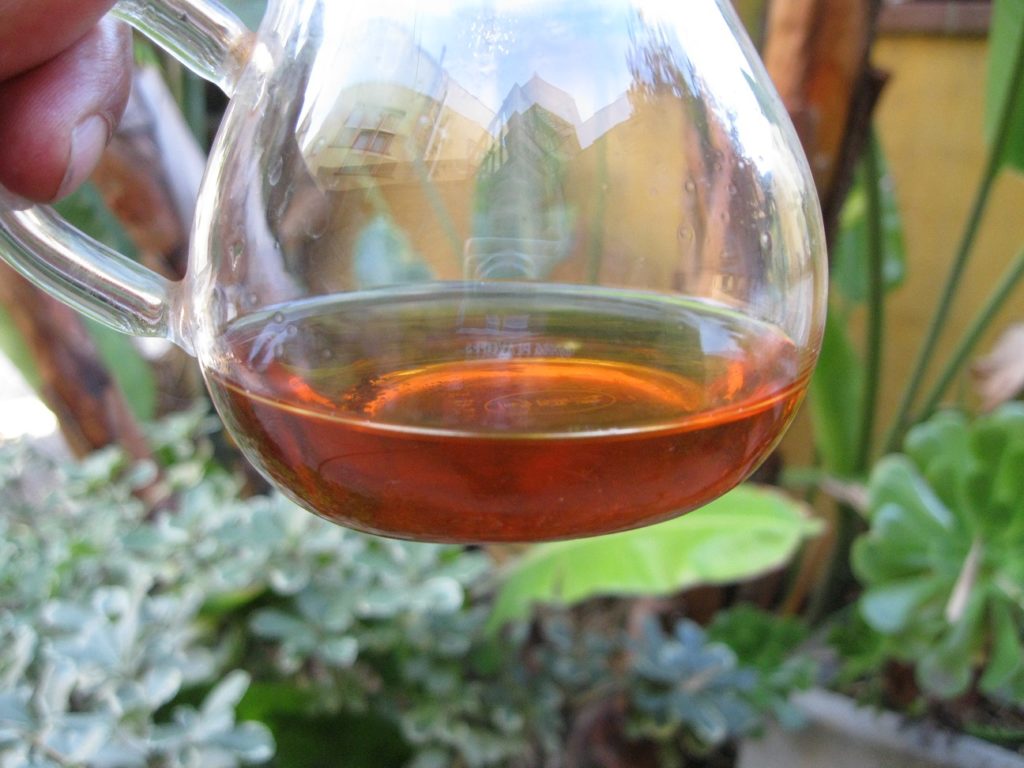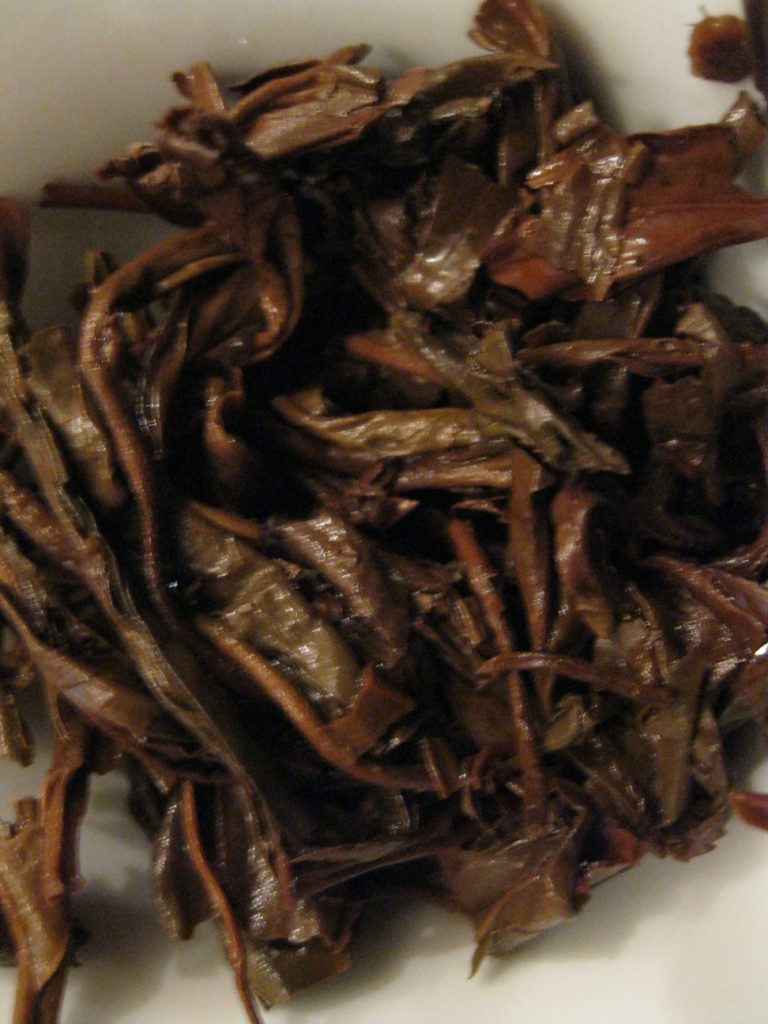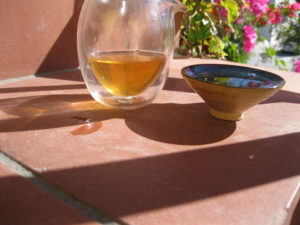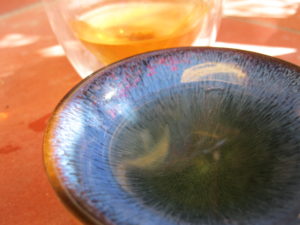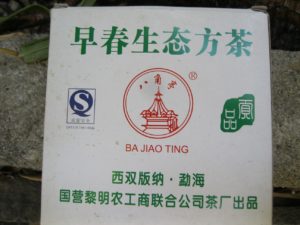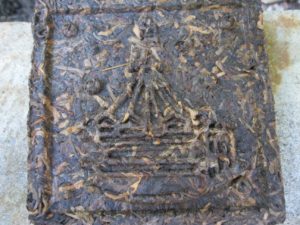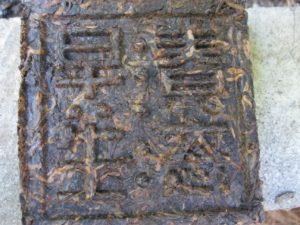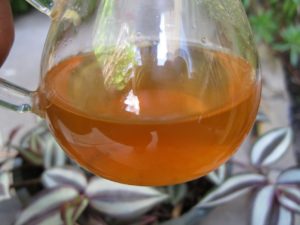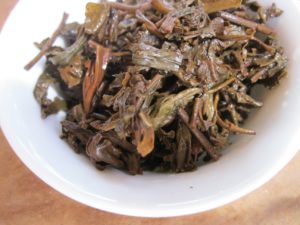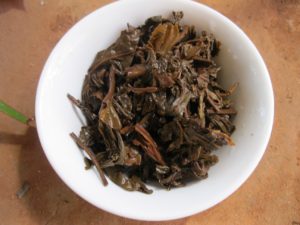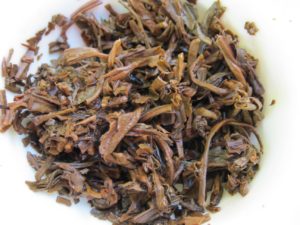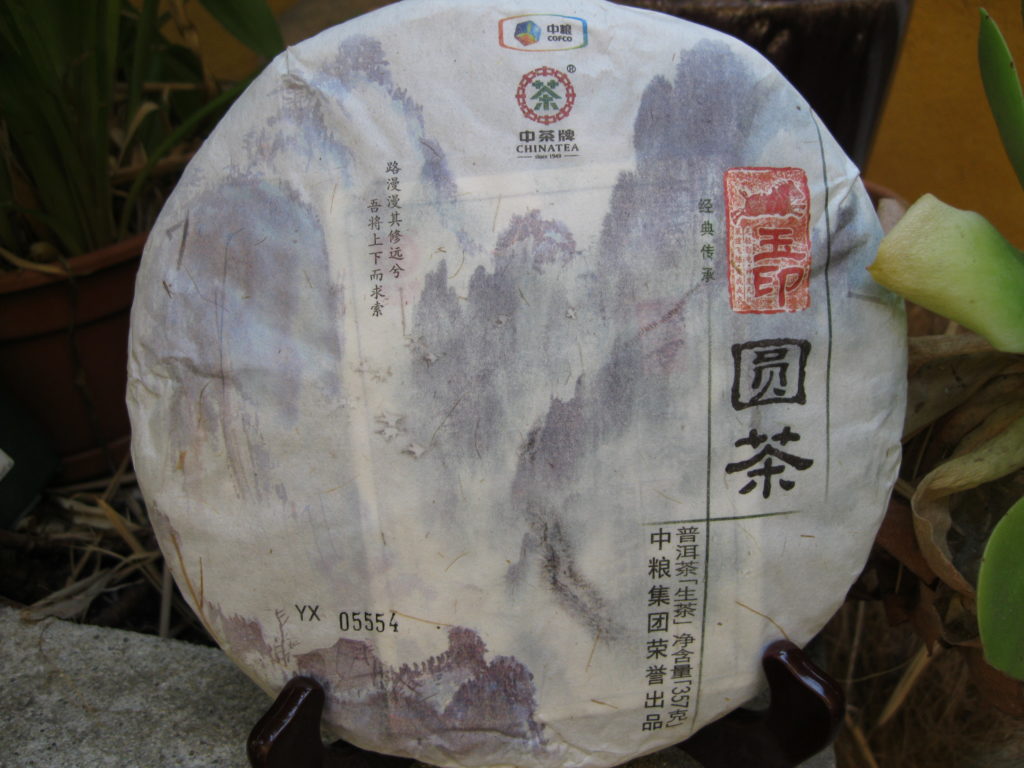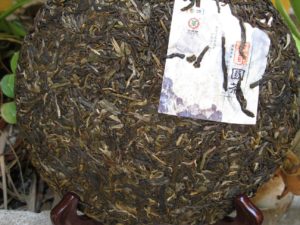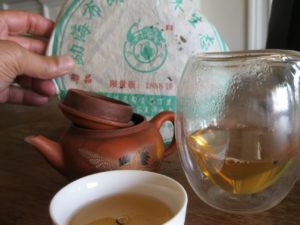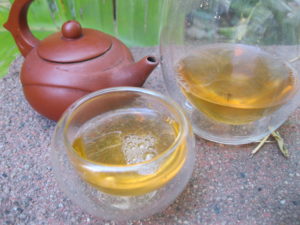Visiting ’07 Thick Zen Puerh
The review I gave on the ’07 Thick Zen puerh is accurate. Since offering it, I’ve had it many times. It’s most striking attribute is how rich the leaves look. Excellent storage, glistening in its black brownish splendor. The liquor produces a decent thickness and there is little astringency to speak of… or sweetness… or flavor… or qi.
I was hoping the a little time would bring out some interesting flavours, but it doesn’t. It is very much in the vein of the Blue Mark. It can be brewed as heavy-handed as you wish and it will never get bitter. There’s no bottoming out either. That is to say, there’s no point at which Thick Zen looses its initial character or turns undrinkable.
Depending upon what you have it with or your habit for sweets, you may be able to detect some apricot sweetness. I’ve definitely found the peacock more pleasing in warm weather. If it had more qi, I’d classify it as an amazing production… possibly. It’s lack of transforming into a more complex expression makes it a larger leaf, autumn Blue Mark: quintessentially Zen, quintessentially Lincang. I find the 9611 Gold Ribbon more interesting.

